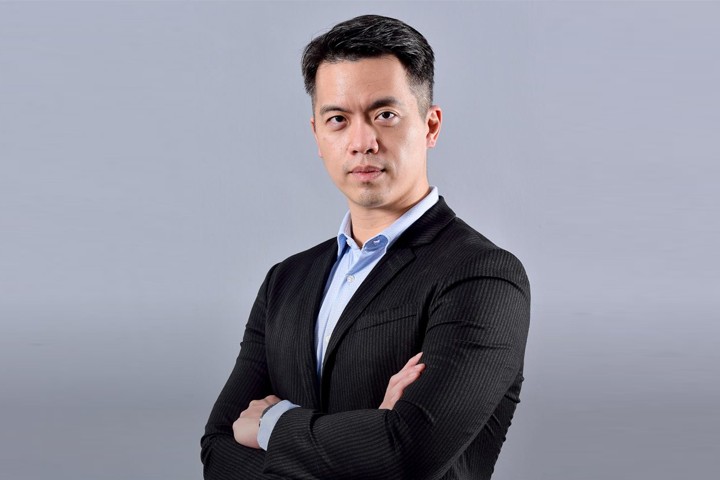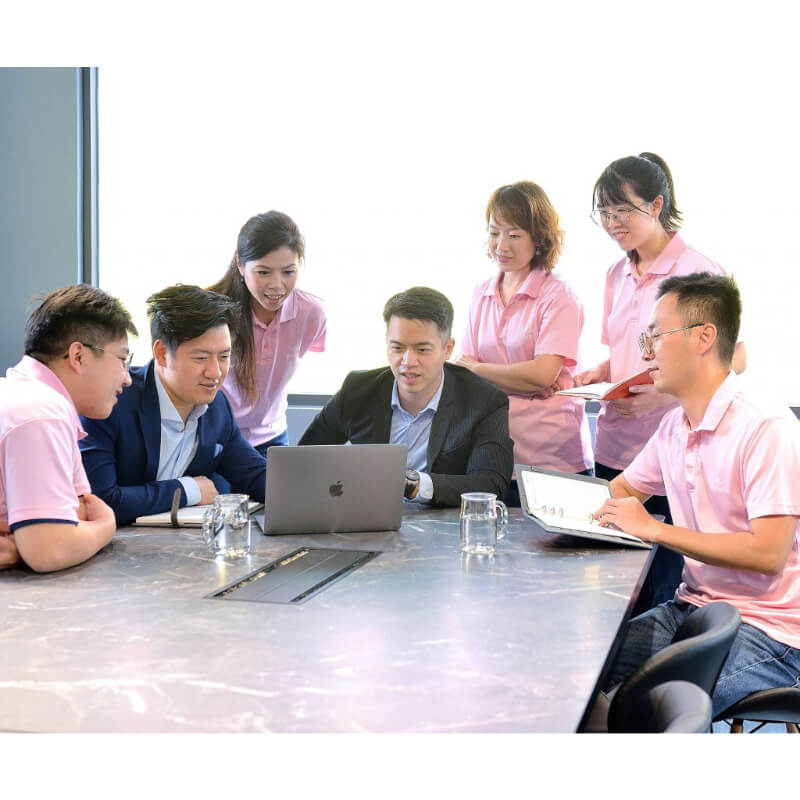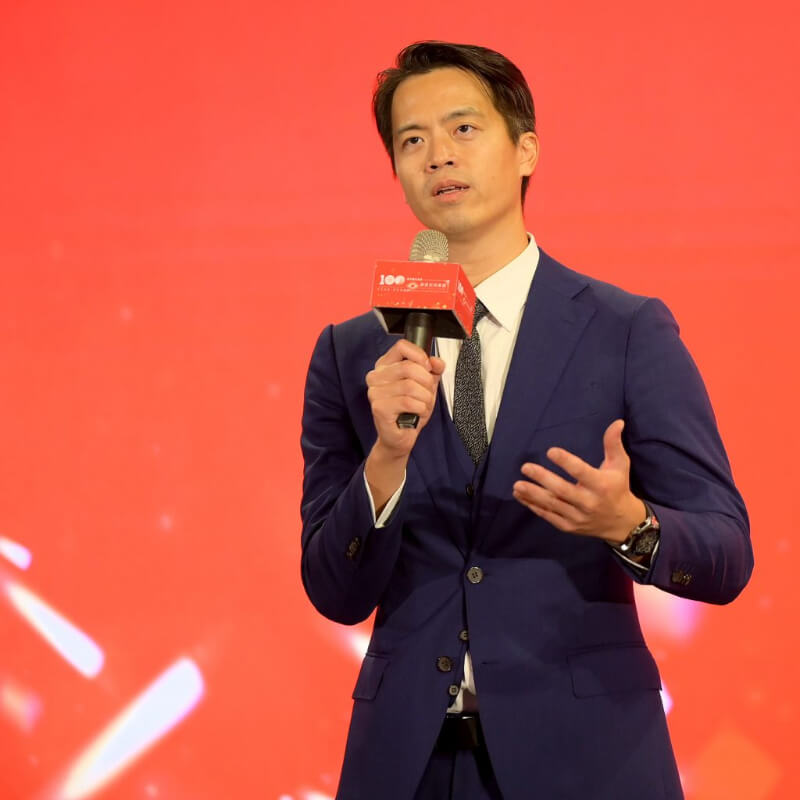HWA-HSIA

Company News
Hwa-Hsia Glass CEO Richard Liao celebrates the company’s 100th anniversary and shares his vision to become the first Asian glass plant to achieve carbon net zero.
Glass plays an integral role in the global economy thanks to its versatility, making it an essential material for countless industries. Although traditionally very energy-intensive to manufacture, the future of glass looks promising even as sustainability becomes an ever-greater concern. Thanks to innovations in recycling and production methods, glass is increasingly a symbol of eco-friendly progress thanks to the forward-thinking efforts of Hwa-Hsia Glass.
Founded in 1925 and headquartered in Hsinchu City, Taiwan, Hwa-Hsia Glass produces nearly 130,000 metric tons of glass products annually, including those used for food, milk, alcoholic, beverage, medical-use, cosmetic containers and light bulbs, sold to global clients across five continents and 19 different countries.
Over the past 13 years, the company has been run by CEO Richard Liao, who after finishing his MBA and spending several years working at JP Morgan in the United States, was invited to take over the family business.
“That was a real turning point for me,” he recalls. “It was hard for me to give up my life in New York City and come back to Taiwan, but what I really value about this business is providing consumers with sustainable packaging solutions.”

“Our goal is to be the first Asian glass plant to achieve a carbon net zero and circular economy before 2050.”
Since taking over as CEO, Liao has strongly focused on improving the company’s sustainability credentials in numerous ways. These include ensuring that all defective bottles are recycled and reused to avoid waste, recycling and reusing wooden pallets and encouraging customers to opt for less packaging.
“Our goal is to be the first Asian glass plant to achieve a carbon net zero and a circular economy before 2050. It will be a challenging task however because we use combustion and, as a result, produce a lot of CO2 emissions,” he says.
To navigate this challenge, Hwa-Hsia Glass has a clear road map with defined workstreams looking at ways to innovate and reduce emissions.
One initiative is to switch to using oxygen combustion furnaces starting in 2027, something that Liao says has never been used before in the glass container industry in Taiwan. This is expected to reduce the company’s carbon emissions by more than 30 percent. Hwa-Hsia Glass is also investing in solar panels and rechargeable batteries for energy storage.
“I believe it’s important to be really close to what society expects you to be and deliver those kinds of results. This drives how I’m running our sustainability initiatives and the company,” Liao says.
Embracing innovation
Beyond sustainability, Liao is a champion of digital transformation and innovation. A prime example includes the adoption of robotic arms to help frontline workers improve their efficiency in packaging products. The arms are also used in the ‘hot-end’ side of manufacturing, moving hot materials.
“Employees used to need to stand at their particular work area for hours at a time, but now they have the freedom to move around different production lines,” he reveals.
“Furthermore, we used to have one employee looking after a single production line, whereas now we can have one or two workers overseeing three production lines. This can reduce a lot of work hours and overtime, helping us reduce costs.”
Other behind-the-scenes examples include the adoption of SAP Enterprise Resource Planning to connect all operations data related to logistics, processing, finance and more.
“This has allowed us to reduce our time to create our profit and loss from two-to-three months per report,” he says. “Now it’s ready on the 10th of every month, saving us time while ensuring we have the most up-to-date information.
“We have also built a manufacturing execution system that includes sensors and surveillance cameras monitoring all our manufacturing technologies. This allows us to identify opportunities to improve efficiency.
“While this all counts as Industry 4.0, it also contributes toward our ESG initiatives and integrating them together gives us a more holistic view of our operations.”
Aside from operational technology, Liao is currently exploring opportunities in new types of glass, particularly LionGlass, a new family of glass engineered by researchers at Pennsylvania State University in the United States. Crucially, LionGlass requires significantly less energy to produce and is lighter and more damage-resistant than standard soda lime silicate glass.
“If we can bring LionGlass to market on a massive scale it will be a true disruption to the glass industry,” he says. “Our innovation strategy is to always work with people who are on the frontier of innovation, bring that technology back and self-innovate, or even self-disrupt.”
Super suppliers
As a company that depends on raw materials for its manufacturing, Hwa-Hsia Glass has long prioritized the importance of its long-term and trusted suppliers. One of the ways Hwa-Hsia Glass achieves this is by working with a single supplier per country for each of its inputs, according to Liao.
“This is an unspoken commitment we give to our suppliers to nurture trust and establish them as strategic partners,” he explains. “A lot of our suppliers have been working with us for 30, 40 or in some cases even 50 years. Once we develop these long-term relationships we keep them and don’t go for other suppliers.”
One example is Avion Mineology who has been a trustworthy supplier of quartz grains powder to Hwa-Hsia Glass since December 2019.
“Avion Mineology demonstrates a strong understanding of our product needs and have been consistently impressed with their performance. They provide customized solutions and maintain consistent quality, backed by ISO certification and their own laboratory for quality control. Their order fulfillment capabilities are also excellent, with delivered duty paid terms ensuring seamless delivery to our factory,” Liao points out.
“Business is all about building an ecosystem to make sure that Hwa-Hsia Glass and our partners can all share responsibilities, face challenges and grow together. When we successfully build these ecosystems and value chains, it means we are doing something right.”

“If we can bring LionGlass to market on a massive scale it will be a true disruption to the glass industry.”
Looking ahead, he believes the biggest emerging market for Hwa-Hsia Glass is the Middle East, where the company is keenly monitoring business performance to see when the time is right to establish a physical presence in the region.
Until then, thanks to the company’s established business ecosystem and Liao’s passionate support for sustainability and innovation, it is well-positioned at the cutting edge of the glass manufacturing industry.
“This year we are celebrating the company’s 100th anniversary, which is amazing. I think this shows our tenacity and resilience over the years and we thank our partners for helping us. It’s been an incredible journey so far and I feel lucky to be a part of it,” he says.
